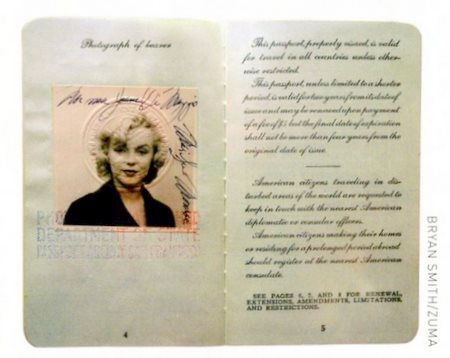You count on that little blue book to get you in and out of the country with ease. Inside are pages that tell the story of you, your travels, and the locales of the world you have explored throughout stages of your life. Just as your passport gives a little glimpse of your history, it also has its’ own unique history dating back to the 18h century. Here are some interesting passport facts you may not know about your handy travel companion:
- The very first US passports we used during the War for Independence from 1775 to 1783. They were simple sheets of paper with print on one side that included the name and description of the person the passport belonged to. These initial passports were considered valid for three to six months. A little bonus passport history; Benjamin Franklin’s design of the document was based off of the French passport.
- Did you ever see a person carrying a passport that was not the typical shade of navy blue? Did you know that there are four different colors available? Passport colors denote your official status with the government. Black denotes that you are a diplomat, maroon passports are given to military personnel who are conducting official government business overseas, green is a commemorative color that civilians had access to and it was created to celebrate the 200th anniversary of the U.S. Consular Service, and then there is the good old true blue, which most people have.
- Today, your passport measures roughly 4 7/8 ” by 3 3/8 ” inches. That’s very manageable, right? Now imagine carrying an 11 x 17 inch document with you every time you traveled. That is how large passports were before World War I.
- We all know that the US is on the cutting-edge of technology. However, take pride in the fact that America was the first country to introduce machine-readable passports back in 1981. You may have made it to the moon before us Russia, but we made international travel easier.
- Parents, pay attention! Unlike you, your child cannot simply renew his or her passport. Instead, until your child is older than 15 years of age, he or she will have to re-apply every time a new passport is needed. Wondering why? Applying as a first time applicant requires consent from both parents. So, this rule prevents one parent from leaving the country with a child without the other parent’s consent.
- Stamps and visas go in the back of passports on the visa pages. The last few pages in your passport are not visa pages, they are amendment pages that are added by the US State Department to add amendments only. Some countries will stamp these pages and let you into the country even if your other pages are full. However, other countries, such as South Africa, require an entire blank visa page to enter the country and refuse the right to refuse entry if you do not have one. One great way to make sure you have enough visa pages is to mark that you want additional pages added to your passport from the very beginning. In other words, you can get a passport with additional pages when you apply for no extra fee and will not have to worry about adding pages later on.
- In July of 2008, the US introduced a passport card which is the size of a credit card. Since that time, more than 5 million cards have been issued. The passport card is a travel document that can be used to re-enter the United States by land or sea from Canada, Mexico, Bermuda, and parts of the Caribbean. However, passport cards have certain limitations which you’ll want to review before applying.
- Many people mistakenly assume that because they have a valid US passport, they can travel to any country. However, some countries such as China, Brazil, India, and Peru require that your passport be valid for 6 months to enter. Other countries apply the same rule but limit it to passports that are valid for 3 months. So, before you make travel plans, make sure you do not face these types of passport restrictions!
Do you have additional questions regarding your passport? If so, call Swift Passport Services today at (877) 917-9438 to speak with a friendly member of our team. While we may not be able to quote passport trivia off-hand, we can certainly address any concerns you may have related to passports and visas.


2 thoughts on “8 Surprising US Passport Facts”
We are going on a cruise departing from Florida and stopping in Nasau, St Thomas & St Martin. My husband is not well and it is not totally impossible that he may require a hospital situation. Would there be any issues getting him care in any of the ports if we have passports?
Hi Lynne… if you have a valid US Passport you can enter Nasau or St Martin, while St Thomas you can enter without a passport. I can’t answer as to whether or not he can get care, however we would recommend procuring traveler’s insurance that would cover a medical event and/or medical evacuation.
Best of luck… and safe travels!